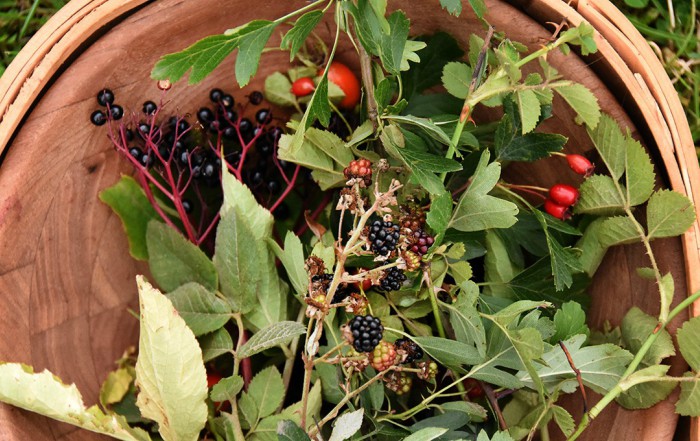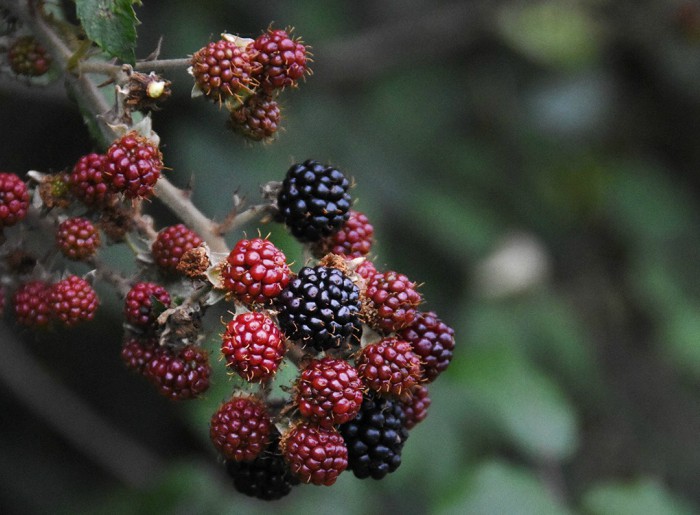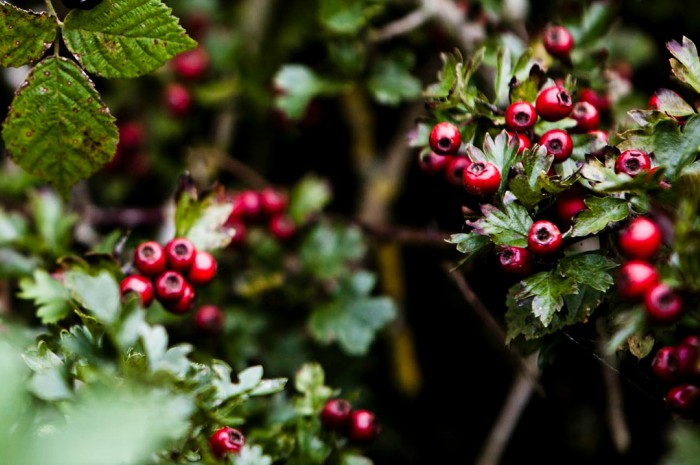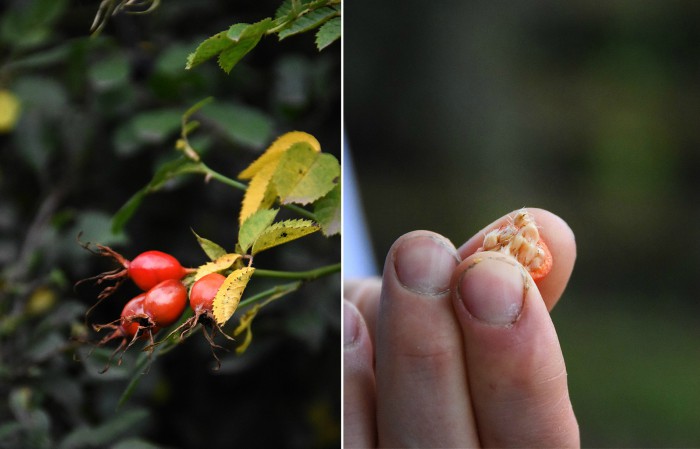
STORIES · 04.09.17
Food
At Daylesford we are looking forward to celebrating autumn at our HARVEST FESTIVAL later this month. Our excitement is being fuelled by the hedgerows and verges ripening with the mellow fruitfulness of the season.
The early glimpses of the bright, glossy berries peeping out of our hedgerows are a sign of the colourful and delicious bounty to come in the full flush of Harvest. We joined TIM FIELD, our own Environmental Scientist, a keen forager and countryman for a walk around Daylesford to pick up some tips on how to enjoy the natural larder.

BLACKBERRIES
Blackberries are often the first to make an appearance at the end of summer and can be used in all manner of recipes but are lovely in their natural form – not all hedgerow finds can be eaten raw. It goes without saying that any gluts should be put to good use in crumbles and pies, but for something a little different, why not try our BLACKBERRY, BEETROOT AND KEFIR SMOOTHIE or perhaps a warming bowlful of our AUTUMN SPICED PORRIDGE WITH BLACKBERRY COULIS.

HAWTHORN BERRIES
You can use hawthorn berries to make “caveman sweets”. Place a couple of handfuls of berries into a bowl, squish them with your hands to help separate the stones from the flesh and push through a sieve with the back of a spoon. Spread the thick orange goo onto some greaseproof paper and let it dry and set into a jelly-like consistency – you can put it into a low oven to speed this up. Hawthorn berries are high in pectin, giving the flesh a pleasing chewy, gummy texture, but there is not much in the way of taste so I like to add honey, herbs or spices to the goo before it dries. Have fun experimenting with flavours.

ROSEHIPS
Rosehip seeds are an irritant, mischievous youths have been known to use them as itching powder in pranks! Rosehips cannot be eaten raw but are delicious cooked in many ways. The classic use for these oval-shaped red berries is rosehip jelly, perfect with roast meat and game or spread on toast. You can also make rosehip syrup for drizzling on porridge, pancakes, ice cream etc. Or dry the hips and make rosehip tea.

ELDERBERRIES
The elder bush offers much for foragers, not just in early summer in the form of fragrant flowers, but in late August and September when their richly toned berries are fruiting. Pick to make delicious jams and jellies to serve alongside game, or soak in alcohol before heating with sugar to form a thick, dark liqueur akin to a delicious Tawny Port.

SLOES
Sloes aren’t just for sloe gin – you can make jams, jellies, even sorbet with this versatile berry. As a variation to gin, try steeping the fruit to flavour whisky or cider.
A FEW FURTHER TIPS…
Don’t worry about gathering too much of one thing. Hedgerow jam or jelly makes an excellent foodie gift and a great souvenir of your foraging quests – try combining a mixture of the edible berries you have found with apples (or foraged crabapples) which are naturally high in pectin to ensure a good set.
Special equipment is not needed for hedgerow foraging – you just need a keen eye. Don’t forget sturdy footwear and of course a basket, trug or bag to collect your treasure!
Try to forage away from busy roads and avoid anything growing too low to the ground. A good rule of thumb is to forage above the height at which a dog might cock its leg…
While it is tempting to graze on the fruit as you gather, it is best to give everything a good wash when you get home before eating.
Join Tim on the Wild & Foraged full day course at the Cookery School at Daylesford on 28th September, more information please click HERE
